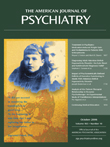Behavior in Simpler Organisms
Much has been learned about the number and effect size of the genes that influence behavior in simpler organisms. Most of these advances come from the application of linkage methods to the study of naturally occurring genetic variation. In linkage analysis of psychiatric disorders, the focus is typically on diseases. However, in animal linkage studies a quantitative behavior (such as motor activity or emotionality) is more commonly used. Genes that influence such traits are called “quantitative trait loci” or QTLs. In QTL analysis, a phenotypic difference between two strains is mapped against an extensive set of genetic markers that also differ between them, and chromosomal regions mediating significant effects are mapped. The power of QTL analysis in simpler organisms often substantially exceeds that available in humans because of the possibility of designing specific crosses to provide maximal linkage information.
Flint has thoroughly reviewed the literature on QTL studies of behavior in rodents, with the most commonly studied traits being circadian rhythm, drug preference or response, emotionality, motor activity, and learning
(21) . He concludes that such behaviors are typically influenced by many genes of small effect. While an accurate estimation of the number of QTLs involved is problematic (and available estimates are likely to be too low), current evidence suggests that most behavioral traits in rodents are influenced by six to 24 QTLs.
In QTL studies, effect size is typically measured as the proportion of variance in the trait that results from variance at the particular QTL. (The available effect sizes are probably overestimates, since large effect genes are the ones to be first detected.) Flint concludes that—while there are exceptions—most behavioral traits are influenced by genes that account for 10% or less of the total phenotypic variance. More typically, detected genes have effect sizes of less than 5%.
In a recent, thorough QTL analysis of five anxiety-related measures in the mouse, Henderson et al.
(25) found a total of 17 QTLs across all the traits and typically four to six per individual measure. While over half of the 17 loci discovered accounted for less than 1% of phenotypic variance, at least one QTL accounting for 5% of total variation was found for each of the five measures. Using a different technical approach (chromosomal substitution strains), Singer et al.
(26) confirmed the presence of multiple loci influencing models of anxiety in mice. In a recent genome-wide association study in genetically heterogeneous mice, Valdar et al. (26a) examined seven behavioral phenotypes divisible into 21 more specific measures. Using a plausible statistical model, they detected a mean of nine QTLs per measure. On average, these QTLs individually accounted for 2.1% of the variation in these behaviors.
Fewer QTL studies of behavioral traits have been conducted in other organisms
(27) . Two recent examples explored variation in a key feature of the courtship song of
Drosophila— the mean interpulse interval—and reported results similar to those found for behaviors in the rodent, i.e., multiple QTLs each accounting for 3%–10% of the phenotypic variance
(28,
29) .
A different approach toward identifying genes involved in behavioral traits in simpler organisms has come with the advent of DNA microarray technology. With these methods, it is possible to directly examine differences in expressed levels of mRNA between strains selected for behavioral differences. This approach does not directly measure the number of allelic differences giving rise to the behavioral difference. Instead, it reveals the set of genes whose expression is changed as a result of those allelic differences. These two sets of allelic differences are surely overlapping, but not likely to be identical. This method was, for example, applied to
Drosophila strains selected for differences in geotaxis and found approximately 250 genes whose expression differed in the two selected lines
(30) .
The number of individual genes influencing a behavioral trait can also be estimated from surveying experimental studies of individual genes. Such studies are carried out with induced mutations (e.g., “knockouts”) or genetically engineered strains (transgenics) in which expression of the gene is altered. While not designed as a direct measure of the number of loci involved, these studies can provide a different sort of sampling than that obtained from more directed gene searches. Furthermore, such a list, if complete, will be considerably larger than that obtained from QTL studies, since many of the genes so identified would not have trait-relevant variations in natural populations. Although far from complete, recent surveys have enumerated 33 genes identified since 1995 that influence aggressive behavior in the male mouse
(31) and 14 loci from mutations that altered odor-guided behavior in
Drosophila (32) .
Combining these two approaches may provide the most complete picture of the multigenic foundations for behavior. In a comprehensive study of genes affecting long-term memory in
Drosophila, Dubnau et al.
(33) combined a large-scale mutation screen with an analysis of gene expression patterns. The mutant screen identified 60 new mutants that are selectively defective in long-term memory, and in parallel, the DNA microarray analysis identified 42 genes expressed in the brains of flies under conditions that produce long-term memory. Both sets of genes run the gamut of biological functions—transcription, translation, signal transduction, cytoskeleton, and metabolism.
How far down the phylogenetic scale of complexity does the multigenic influence over behavior extend? In the nematode
C. elegans— which contains only 302 neurons—mutations in over 100 different genes impair locomotion while mutations in at least 18 genes are involved in the response to light touch
(34) . Many genes appear to be able to influence behaviors in even the simplest organisms.
In summary, three distinct methods—QTL linkage analysis, examination of knockout and transgenic animals, and comparison of expression arrays in selected lines—all suggest that in simpler organisms most behavioral traits are influenced by a relatively large number of genes. Variants in these genes that exist in natural populations tend to have modest effects on the phenotype.


